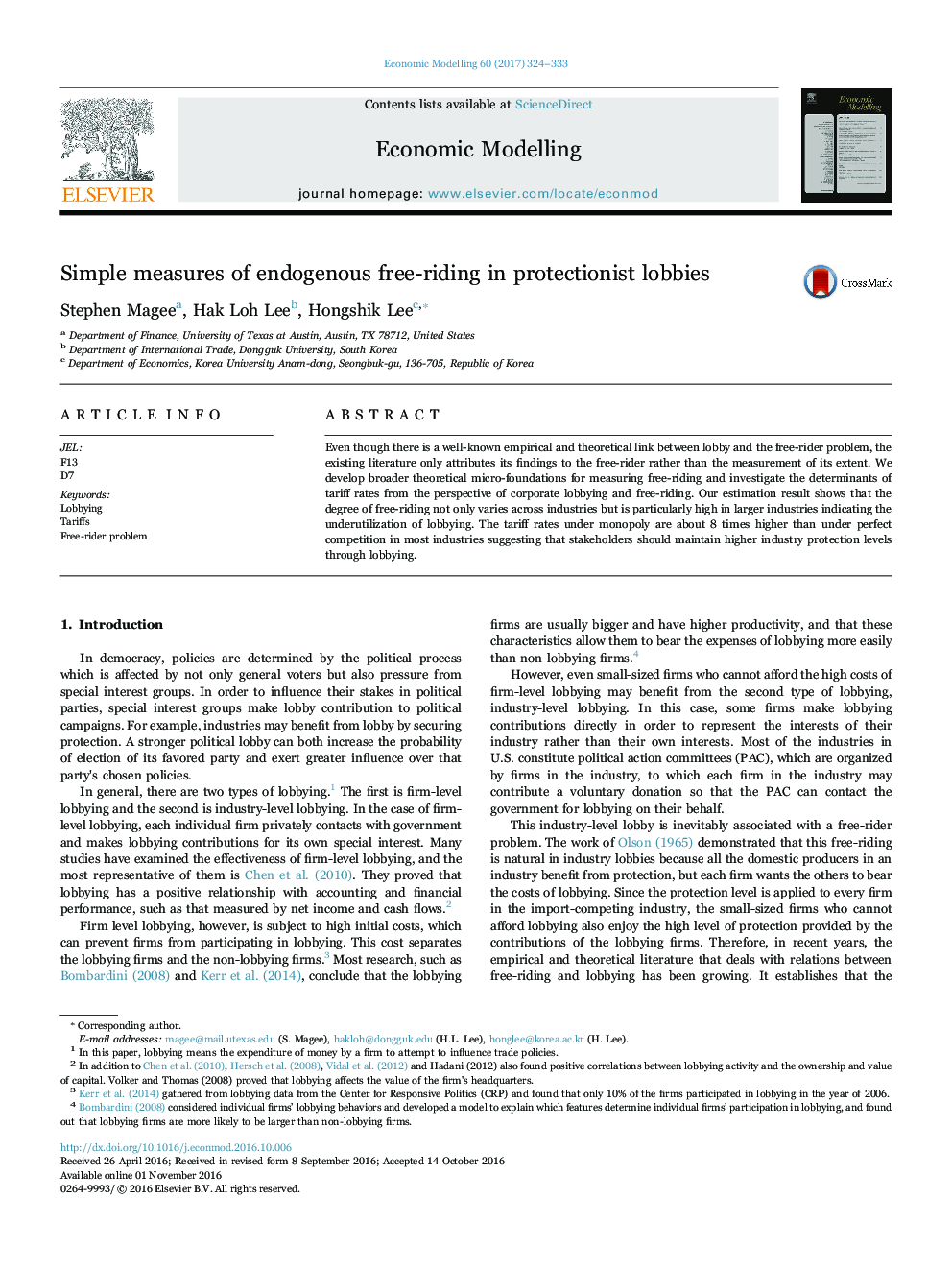| Article ID | Journal | Published Year | Pages | File Type |
|---|---|---|---|---|
| 5053209 | Economic Modelling | 2017 | 10 Pages |
â¢We develop broader theoretical micro-foundations for measuring free-riding and investigate the determinants of tariff rates from the perspective of corporate lobbying and free-riding.â¢The less competitive an industry, the more lobbying for protection due to a smaller chance of free-riding. As a result, economic inefficiency manifests when an industry is less competitive, such as the case with monopolies and oligopolies.â¢The simulated tariff rates under monopoly are 8 times higher than those under perfect competition in most industries. This suggests that more concentrated industries keep the protection level higher through lobbying.
Even though there is a well-known empirical and theoretical link between lobby and the free-rider problem, the existing literature only attributes its findings to the free-rider rather than the measurement of its extent. We develop broader theoretical micro-foundations for measuring free-riding and investigate the determinants of tariff rates from the perspective of corporate lobbying and free-riding. Our estimation result shows that the degree of free-riding not only varies across industries but is particularly high in larger industries indicating the underutilization of lobbying. The tariff rates under monopoly are about 8 times higher than under perfect competition in most industries suggesting that stakeholders should maintain higher industry protection levels through lobbying.
